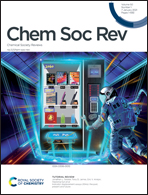Organic synthesis with the most abundant transition metal–iron: from rust to multitasking catalysts
Abstract
In industries and academic laboratories, several late transition metal-catalyzed prerequisite reactions are widely performed during single and multistep synthesis. However, besides the desired products, these reactions lead to the generation of numerous chemical waste materials, by-products, hazardous gases, and other poisonous materials, which are discarded in the environment. This is partly responsible for the creation of global warming, resulting in climate adversities. Thus, the development of environmentally benign, cheap, easily accessible, and earth-abundant metal catalysts is desirable to minimize these issues. Certainly, iron is one of the most important metals belonging to this family. The field of iron catalysis has been explored in the last two-three decades out of its rich chemistry depending on its oxidation states and ligand cooperation. Moreover, this field has been enriched by the promising development of iron-catalyzed reactions namely, C–H bond activation, including organometallic C–H activation and C–H functionalization via outer-sphere pathway, cross-dehydrogenative couplings, insertion reactions, cross-coupling reactions, hydrogenations including hydrogen borrowing reactions, hydrosilylation and hydroboration, addition reactions and substitution reactions. Thus, herein an inclusive overview of these reaction have been well documented.

- This article is part of the themed collection: Earth Abundant Metals in Catalysis


 Please wait while we load your content...
Please wait while we load your content...